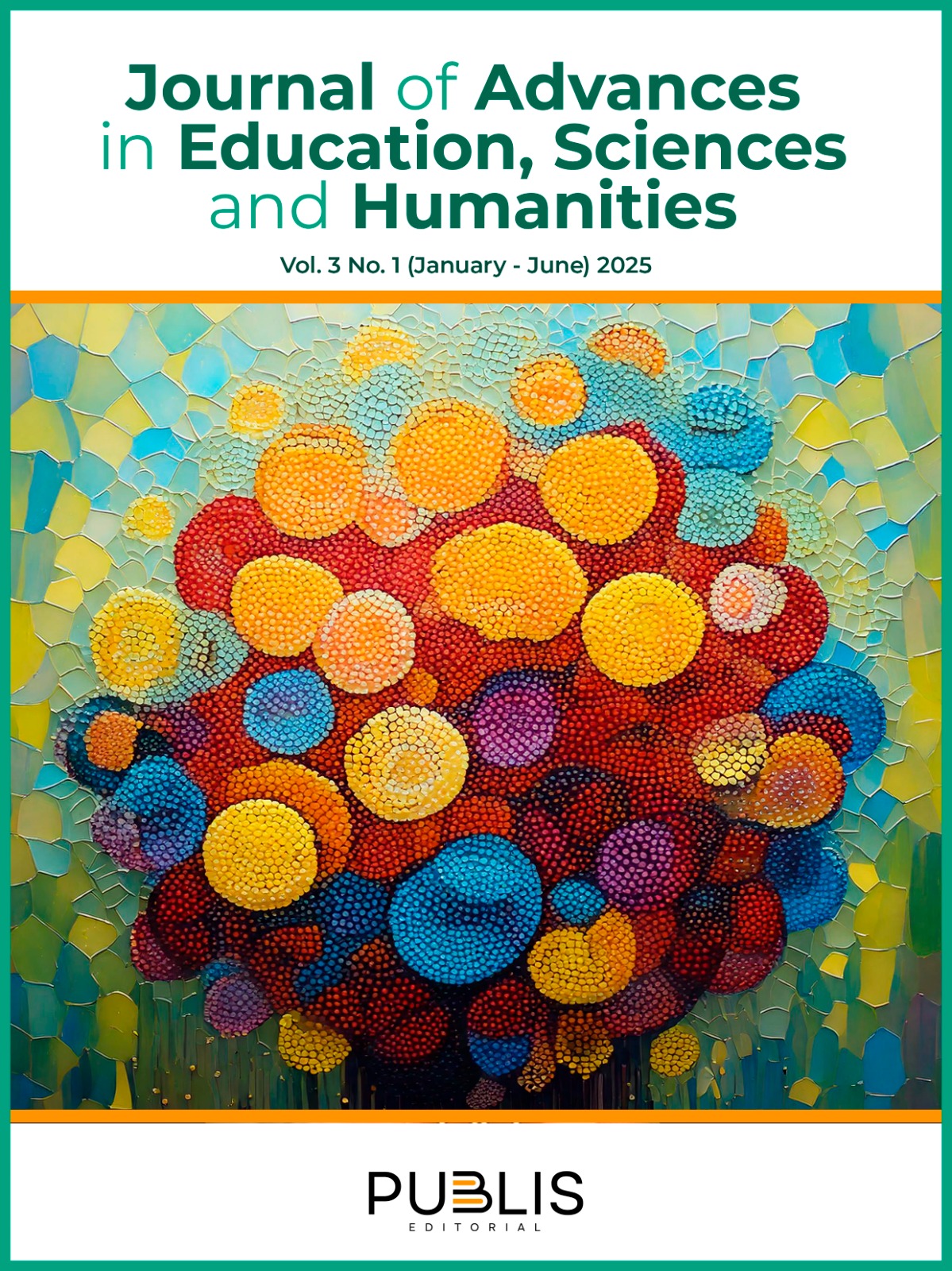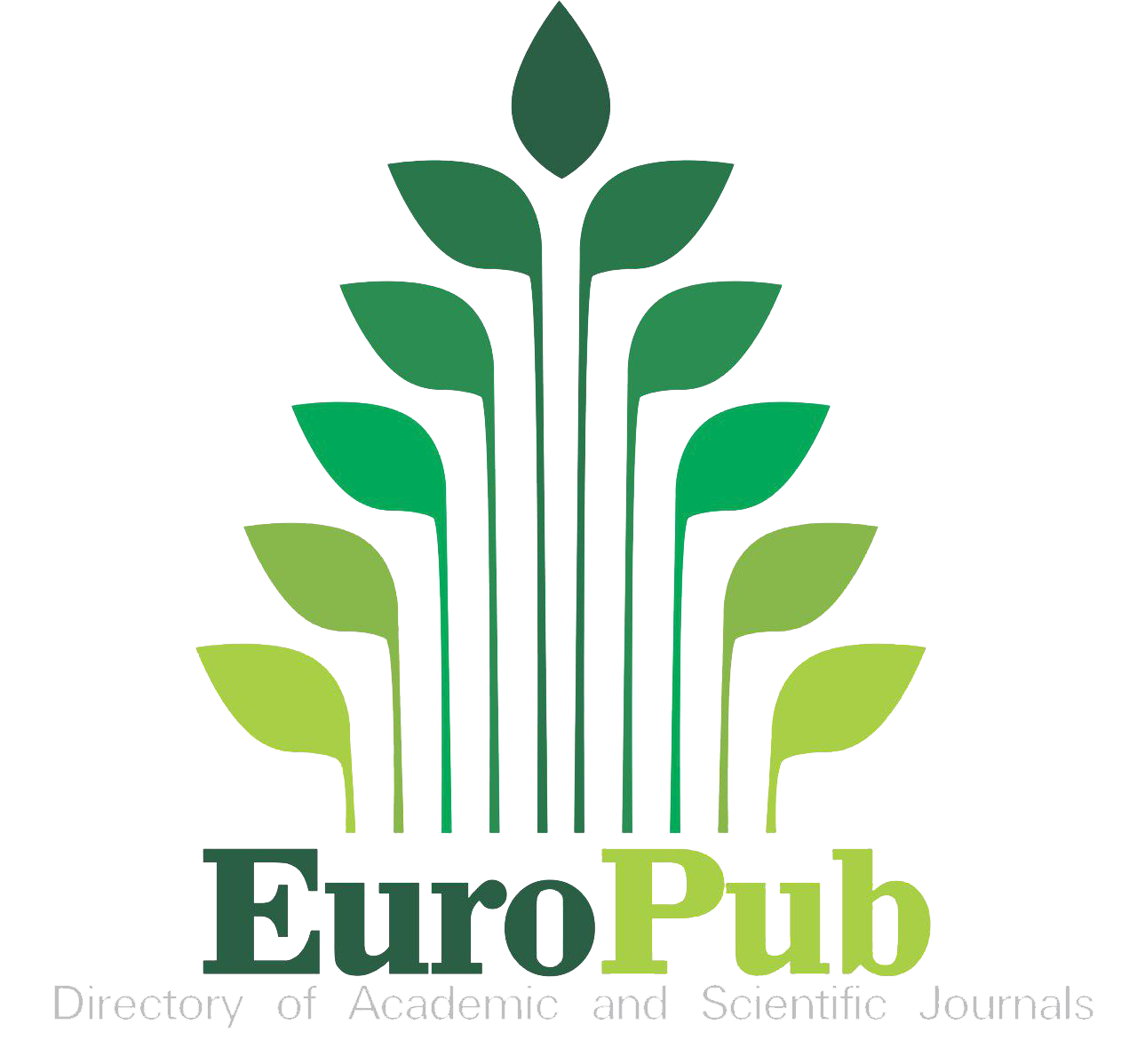Microencapsulación de compuestos bioactivos en la industriaalimentaria
DOI:
https://doi.org/10.5281/zenodo.14816620Palabras clave:
microencapsulación, compuestos bioactivos, microorganismos probióticos, estabilidad, liberación controlada, industria alimentariaResumen
La microencapsulación de compuestos bioactivos es una tecnología ampliamente utilizada en la industria alimentaria para proteger y mejorar la funcionalidad de ingredientes bioactivos como vitaminas, antioxidantes, probióticos y ácidos grasos esenciales. Este proceso implica encapsular partículas bioactivas en una matriz, generalmente de polímeros naturales o sintéticos, formando microcápsulas que mejoran la estabilidad, liberación controlada y biodisponibilidad de los compuestos. Entre las técnicas más empleadas destacan el spray-drying, coacervación y extrusión, seleccionadas según las propiedades del compuesto a encapsular y las aplicaciones deseadas. Estas tecnologías permiten proteger los compuestos sensibles frente a factores adversos como la oxidación, la humedad, la luz o el pH extremo durante el procesamiento y almacenamiento de alimentos. La microencapsulación facilita la liberación controlada de los compuestos bioactivos en el momento y lugar adecuado, mejorando su efectividad en el organismo, propiedad esencial en los alimentos funcionales y nutracéuticos. El objetivo de esta revisión fue analizar las técnicas de microencapsulación utilizadas en la industria alimentaria para proteger y mejorar la funcionalidad de compuestos bioactivos, como vitaminas, antioxidantes, probióticos y ácidos grasos esenciales.
Descargas
Referencias
Abka-Khajouei, R., Tounsi, L., Shahabi, N., Patel, A. K., Abdelkafi, S., & Michaud, P. (2022). Structures, Properties and Applications of Alginates. Marine Drugs, 20(6), 364. https://doi.org/10.3390/md20060364
Adhikari, K., Mustapha, A., & Grün, I. U. (2003). Survival and Metabolic Activity of Microencapsulated Bifidobacterium longum in Stirred Yogurt. Journal of Food Science, 68(1), 75-280. https://doi.org/10.1111/j.1365-2621.2003.tb14152.x
Adhikari, K., Mustapha, A., Grün, I. U., & Fernando, L. (2000). Viability of Microencapsulated Bifidobacteria in Set Yogurt During Refrigerated Storage. Journal of Dairy Science, 83, 1946–1951. https://doi.org/10.3168/jds.S0022-0302(00)75070-3
Agriopoulou, S., Tarapoulouzi, M., Varzakas, T., & Jafari, S. M. (2023). Application of Encapsulation Strategies for Probiotics: From Individual Loading to Co-Encapsulation. Microorganisms, 11(12), 2896. https://doi.org/10.3390/microorganisms11122896
Aranaz, I., Alcántara, A. R., Civera, M. C., Arias, C., Elorza, B., Heras, A., & Acosta, N. (2021). Chitosan: An Overview of Its Properties and Applications. Polymers (Basel), 13(19), 3256. https://doi.org/10.3390/polym13193256
Arebo, M. A., Feyisa, J. D., Tafa, K. D., & Satheesh, N. (2023). Optimization of spray-drying parameter for production of better quality orange fleshed sweet potato (Ipomoea batatas L.) powder: Selected physiochemical, morphological, and structural properties. Heliyon, 9(1), e13078. https://doi.org/10.1016/j.heliyon.2023.e13078
Ayyaril, S. S., Shanableh, A., Bhattacharjee, S., Rawas-Qalaji, M., Cagliani, R., Shabib, A. G., & Khan, M. I. (2023). Recent progress in micro and nano-encapsulation techniques for environmental applications: A review. Results in Engineering, 18, 101094. https://doi.org/10.1016/j.rineng.2023.101094
Bamidele, O. P., & Emmambux, M. N. (2020). Encapsulation of bioactive compounds by “extrusion” technologies: a review. Critical Reviews in Food Science and Nutrition, 61(18), 3100–3118. https://doi.org/10.1080/10408398.2020.1793724
Calderón-Oliver, M., & Ponce-Alquicira, E. (2022). The Role of Microencapsulation in Food Application. Molecules, 27(5), 1499. https://doi.org/10.3390/molecules27051499
Călinoiu, L. F., Ştefănescu, B. E., Pop, I. D., Muntean, L., & Vodnar, D. C. (2019). Chitosan Coating Applications in Probiotic Microencapsulation. Coatings, 9(3), 194. https://doi.org/10.3390/coatings9030194
Capela, P., Hay, T. K. C., & Shah, N. P. (2006). Effect of cryoprotectants, prebiotics and microencapsulation on survival of probiotic organisms in yoghurt and freezedried yoghurt. Food Research International, 39(2), 203-211. https://doi.org/10.1016/j.foodres.2005.07.007
Choudhury, N., Meghwal, M., & Das, K. (2021). Microencapsulation: An overview on concepts, methods, properties and applications in foods. Food Frontiers, 2(4), 426-442. https://doi.org/10.1002/fft2.94
Donthidi, A. R., Tester, R. F., & Aidoo, K. E. (2010). Effect of lecithin and starch on alginate-encapsulated probiotic bacteria. Journal of Microencapsulation, 27(1), 67–77. https://doi.org/10.3109/02652040902982183
Drozłowska, E., Starowicz, M., Śmietana, N., Krupa-Kozak, U., & Łopusiewicz, Ł. (2023). Spray-Drying Impact the Physicochemical Properties and Formation of Maillard Reaction Products Contributing to Antioxidant Activity of Camelina Press Cake Extract. Antioxidants (Basel), 12(4), 919. https://doi.org/10.3390/antiox12040919
Godward, G., & Kailasapathy, K. (2003). Viability and survival of free and encapsulated probiotic bacteria in Cheddar cheese. Milchwissenschaft: Milk Science International, 58(11-12), 624-627. http://handle.uws.edu.au:8081/1959.7/35106
Homayouni, A., Azizi, A., Ehsani, M. R., Yarmand, M. S., & Razavi, S. H. (2008). Effect of microencapsulation and resistant starch on the probiotic survival and sensory properties of symbiotic ice cream. Food Chemistry, 111(1), 50–55. https://doi.org/10.1016/j.foodchem.2008.03.036
Hurtado, A., Aljabali, A. A. A., Mishra, V., Tambuwala, M. M., & Serrano-Aroca, Á. (2022). Alginate: Enhancement Strategies for Advanced Applications. International Journal of Molecular Sciences, 23(9), 4486. https://doi.org/10.3390/ijms23094486
Iyer, C., & Kailasapathy, K. (2005). Effect of Co-encapsulation of Probiotics with Prebiotics on Increasing the Viability of Encapsulated Bacteria under In Vitro Acidic and Bile Salt Conditions and in Yogurt. Journal of Food Science, 70(1), M18-M23. https://doi.org/10.1111/j.1365-2621.2005.tb09041.x
Jiménez-Gómez, C.P., & Cecilia, J.A. (2020). Chitosan: A Natural Biopolymer with a Wide and Varied Range of Applications. Molecules, 25(17), 3981. https://doi.org/10.3390/molecules25173981
Jurášková, D., Ribeiro, S. C., & Silva, C. C. G. (2022). Exopolysaccharides Produced by Lactic Acid Bacteria: From Biosynthesis to Health-Promoting Properties. Foods, 11(2), 156. https://doi.org/10.3390/foods11020156
Kailasapathy, K. (2006). Survival of free and encapsulated probiotic bacteria and their effect on the sensory properties of yoghurt. LWT - Food Science and Technology, 39(10), 1221-1227. https://doi.org/10.1016/j.lwt.2005.07.013
Kailasapathy, K., & Masondole, L. (2005). Survival of free and microencapsulated Lactobacillus acidophilus and Bifidobacterium lactis and their effect on texture of feta cheese. The Australian Journal of Dairy Technology, 60(3), 252-258. https://researchdirect.westernsydney.edu.au/islandora/object/uws:983
Kamaly, N., Yameen, B., Wu, J., & Farokhzad, O. C. (2016). Degradable Controlled-Release Polymers and Polymeric Nanoparticles: Mechanisms of Controlling Drug Release. Chemical Reviews, 116(4), 2602–2663. https://doi.org/10.1021/acs.chemrev.5b00346
Kiousi, D. E., Karapetsas, A., Karolidou, K., Panayiotidis, M.I., Pappa, A., & Galanis, A. (2019). Probiotics in Extraintestinal Diseases: Current Trends and New Directions. Nutrients, 11(4), 788. https://doi.org/10.3390/nu11040788
Kowalska, E., Ziarno, M., Ekielski, A., & Żelaziński, T.(2022). Materials Used for the Microencapsulation of Probiotic Bacteria in the Food Industry. Molecules, 27(10), 3321. https://doi.org/10.3390/molecules27103321
Krasaekoopt, W., Bhandari, B., & Deeth, H. (2004). The influence of coating materials on some properties of alginate beads and survivability of microencapsulated probiotic bacteria. International Dairy Journal, 14(8), 737-743. https://doi.org/10.1016/j.idairyj.2004.01.004
Lakshmi, A. B, Dhanusha, K., Ayisha, S. A., & Vi alakshmi, M. K. (2023). Biodegradable polymers for microencapsulation systems: Review Article. Journal of Pharma Insights and Research, 1(2), 097-107. https://jopir.in/index.php/journals/article/view/43
Latif, A., Shehzad, A., Niazi, S., Zahid, A., Ashraf, W., Iqbal, M. W., Rehman, A., Riaz, T., Aadil, R. M., Khan, I. M., Özogul, F., Rocha, J. M., Esatbeyoglu, T., & Korma, S. A. (2023). Probiotics: mechanism of action, health benefits and their application in food industries. Frontiers in Microbiology, 14, 1216674. https://doi.org/10.3389/fmicb.2023.1216674
Lotfipour, F., Mirzaeei, S., & Maghsoodi, M. (2012). Evaluation of the effect of CaCl2 and alginate concentrations and hardening time on the characteristics of Lactobacillus acidophilus loaded alginate beads using response surface analysis. Advanced Pharmaceutical Bulletin, 2(1):71–78. https://doi.org/10.5681/apb.2012.010
Lukova, P., Katsarov, P., & Pilicheva, B. (2023). Application of Starch, Cellulose, and Their Derivatives in the Development of Microparticle Drug-Delivery Systems. Polymers, 15(17), 3615. https://doi.org/10.3390/polym15173615
Mahmoud, M., Abdallah, N. A., El-Shafei, K., Tawfik, N. F., & El-Sayed, H. S. (2020). Survivability of alginate- microencapsulated Lactobacillus plantarum during storage, simulated food processing and gastrointestinal conditions. Heliyon, 6(3), e03541. https://doi.org/10.1016/j.heliyon.2020.e03541
Malektaj, H., Drozdov, A. D., & deClaville C. J. (2023). Mechanical Properties of Alginate Hydrogels Cross-linked with Multivalent Cations. Polymers, 15(14), 3012. https://doi.org/10.3390/polym15143012
Mazziotta, C., Tognon, M., Martini, F., Torreggiani, E., & Rotondo, J. C. (2023). Probiotics Mechanism of Action on Immune Cells and Beneficial Effects on Human Health. Cells, 12(1), 184. https://doi.org/10.3390/cells12010184
McMaster, L. D., & Kokott, S. A. (2005). Micro-encapsulation of Bifidobacterium lactis for incorporation into soft foods. World Journal of Microbiology and Biotechnology, 21, 723-728. https://doi.org/10.1007/s11274-004-4798-0
Meng, Q., Zhong, S., Wang, J., Gao, Y., & Cui, X. (2023). Advances in chitosan-based microcapsules and their applications. Carbohydrate Polymers, 300, 120265. https://doi.org/10.1016/j.carbpol.2022.120265
Mohammed, N. K., Tan, C. P., Manap, Y. A., Muhialdin, B. J., & Hussin, A. S. M. (2020). Spray Drying for the Encapsulation of Oils-A Review. Molecules, 25(17), 3873. https://doi.org/10.3390/molecules25173873
Mortazavian, A. M., Ehsani, M. R., Azizi, A., Razavi, S. H., Mousavi, S. M., Sohrabvandi, S., & Reinheimer, J. A. (2008). Viability of calcium-alginate-microencapsulated probiotic bacteria in Iranian yogurt drink (Doogh) during refrigerated storage and under simulated gastrointestinal conditions. Australian Journal of Dairy Technology, 63(1), 25-30. https://bit.ly/4fakzTO
Muthukumarasamy, P., & Holley, R. A. (2007). Survival of Escherichia Coli O157:H7 in Dry Fermented Sausages Containing Micro-Encapsulated Probiotic Lactic Acid Bacteria. Food Microbiology, 24, 82-88. https://doi.org/10.1016/j.fm.2006.03.004
Muthukumarasamy, P., Allan-Wojtas, P., & Holley, R. A. (2006). Stability of Lactobacillus reuteri in Different Types of Microcapsules. Journal of Food Science, 71(1), M20-M24. https://doi.org/10.1111/j.1365-2621.2006.tb12395.x
Naveed, M.H., Jan, T., Qureshi, H., & Mumtaz, K. (2021). Significance of Microencapsulation Technology: A review. Journal Advances of Nutrition, Science & Technology, 1(4), 164-179. https://doi.org/10.15228/ANST.2021.v01.i04.p04
Özer, B., Kirmaci, H.A., Şenel, E., Atamer, M., & Hayaloğlu, A. (2009). Improving the viability of Bifidobacterium bifidum BB-12 and Lactobacillus acidophilus LA-5 in white-brined cheese by microencapsulation. International Dairy Journal, 19(1), 22-29. https://doi.org/10.1016/j.idairyj.2008.07.001
Özer, B., Uzun, Y. S., & Kirmaci, H. A. (2008). Effect of Microencapsulation on Viability of Lactobacillus acidophilus LA-5 and Bifidobacterium bifidum BB-12 During Kasar Cheese Ripening. International Journal of Dairy Technology, 61(3), 237-244. https://bit.ly/3OPnvuy
Pattnaik, M., Pandey, P., Martin, G. J. O., Mishra, H. N., & Ashokkumar, M. (2021). Innovative Technologies for Extraction and Microencapsulation of Bioactives from Plant-Based Food Waste and their Applications in Functional Food Development. Foods, 10(2), 279. https://doi.org/10.3390/foods10020279
Picot, A., & Lacroix, C. (2004). Encapsulation of bifidobacteria in whey protein-based microcapsules and survival in simulated gastrointestinal conditions and in yoghurt. International Dairy Journal, 14(6), 505-515. https://doi.org/10.1016/j.idairyj.2003.10.008
Piekarska, K., Sikora, M., Owczarek, M., Jóźwik-Pruska, J., & Wiśniewska-Wrona, M. (2023). Chitin and Chitosan as Polymers of the Future—Obtaining, Modification, Life Cycle Assessment and Main Directions of Application. Polymers, 15(4), 793. https://doi.org/10.3390/polym15040793
Piñón-Balderrama, C. I., Leyva-Porras, C., Terán-Figueroa, Y., Espinosa-Solís, V., Álvarez-Salas, C., & Saavedra- Leos, M. Z. (2020). Encapsulation of Active Ingredients in Food Industry by Spray-Drying and Nano Spray-Drying Technologies. Processes, 8(8), 889. https://doi.org/10.3390/pr8080889
Plaza-Diaz, J., Ruiz-Ojeda, F. J., Gil-Campos, M., & Gil, A. (2019). Mechanisms of Action of Probiotics. Advantage Nutrition, 10(suppl_1), S49-S66. https://doi.org/10.1093/advances/nmy063
Possemiers, S., Marzorati, M., Verstraete, W., & Van de Wiele, T. (2010). Bacteria and chocolate: a successful combination for probiotic delivery. International Journal of Food Microbiology, 141(1-2), 97-103. https://doi.org/10.1016/j.ijfoodmicro.2010.03.008
Poulson, B. G., Alsulami, Q. A., Sharfalddin, A., El Agammy, E. F., Mouffouk, F., Emwas, A. H., Jaremko, L., & Jaremko, M. (2022). Cyclodextrins: Structural, Chemical, and Physical Properties, and Applications. Polysaccharides, 3(1), 1-31. https://doi.org/10.3390/polysaccharides3010001
Reid, A. A., Champagne, C. P., Gardner, N., Fustier, P., & Vuillemard, J. C. (2007). Survival in food systems of Lactobacillus rhamnosus R011 microentrapped in whey protein gel particles. Journal of Food Science, 72(1), M031-7. https://doi.org/10.1111/j.1750-3841.2006.00222.x Rios-Aguirre, S., & Gil-Garzón, M. A. (2021). Microencapsulación por secado por aspersión de compuestos bioactivos en diversas matrices: una revisión. TecnoLógicas, 24(51), e1836, 2021. https://doi.org/10.22430/22565337.1836
Sandoval-Castilla, O., Lobato-Calleros, C., García-Galindo, H. S., Alvarez-Ramírez, J., & Vernon-Carter, E. J. (2010). Textural properties of alginate–pectin beads and survivability of entrapped Lb. casei in simulated gastrointestinal conditions and in yoghurt. Food Research International, 43(1), 111-117. https://doi.org/10.1016/j.foodres.2009.09.010
Shah, N. P., & Ravula, R. R. (2000). Microencapsulation of probiotic bacteria and their survival in frozen fermented dairy desserts. Australian Journal of Dairy Technology, 55(3), 139-144. https://vuir.vu.edu.au/15337/1/Ravula_2000compressed.pdf
Sultana, K., Godward, G., Reynolds, N., Arumugaswamy, R., Peiris, P., & Kailasapathy, K. (2000). Encapsulation of probiotic bacteria with alginate-starch and evaluation of survival in simulated gastrointestinal conditions and in yoghurt. International Journal oF Food Microbiology, 62(1-2), 47-55. https://doi.org/10.1016/s0168-1605(00)00380-9
Sun, W., & Griffiths, M. W. (2000). Survival of bifidobacteria in yogurt and simulated gastric juice following immobilization in gellan-xanthan beads. International Journal of Food Microbiology, 61(1), 17-25. https://doi.org/10.1016/s0168-1605(00)00327-5
Terpou, A., Papadaki, A., Lappa, I. K., Kachrimanidou, V., Bosnea, L. A., & Kopsahelis, N. (2019). Probiotics in Food Systems: Significance and Emerging Strategies Towards Improved Viability and Delivery of Enhanced Beneficial Value. Nutrients, 11(7), 1591. https://doi.org/10.3390/nu11071591
Ulrika, W. (2022). Assessing Viability and Stress Tolerance of Probiotics—A Review. Frontiers in Microbiology, 12. https://doi.org/10.3389/fmicb.2021.818468
Vieira, M. V., Pastrana, L. M., & Fuciños, P. (2020). Microalgae Encapsulation Systems for Food, Pharmaceutical and Cosmetics Applications. Marine Drugs, 18(12), 644. https://doi.org/10.3390/md18120644
Weinbreck, F., Bodnár, I., & Marco, M. L. (2010). Can encapsulation lengthen the shelf-life of probiotic bacteria in dry products? International Journal of Food Microbiology, 136(3), 364-367. https://doi.org/10.1016/j.ijfoodmicro.2009.11.004
Yan, D., Li, Y., Liu, Y., Li, N., Zhang, X., & Yan, C. (2021). Antimicrobial Properties of Chitosan and Chitosan Derivatives in the Treatment of Enteric Infections. Molecules, 26(23), 7136. https://doi.org/10.3390/molecules26237136
Zabot, G. L., Schaefer, F., Polano, O. L, Vinícius, T. M., Herrera, E., Palacin, H., Córdova-Ramos, J. S., Best, I., & Olivera-Montenegro, L. (2022). Encapsulation of Bioactive Compounds for Food and Agricultural Applications. Polymers (Basel), 14(19), 4194. https://doi.org/10.3390/polym14194194
Zhang, R., Hoffmann, T., & Tsotsas, E. (2020). Novel Technique for Coating of Fine Particles Using Fluidized Bed and Aerosol Atomizer. Processes, 8(12), 1525. https://doi.org/10.3390/pr8121525
Publicado
Declaración de disponibilidad de datos
No aplicable.
Número
Sección
Licencia
Derechos de autor 2025 Dania Torres, Alicia Casariego, Mario A. García (Author)

Esta obra está bajo una licencia internacional Creative Commons Atribución-NoComercial-CompartirIgual 4.0.




































